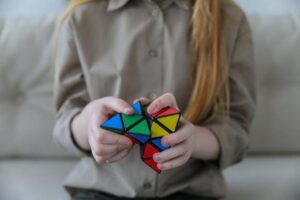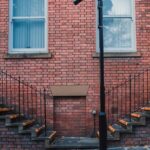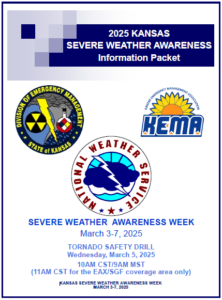 Imagine the future.
Imagine the future.
Your community foundation helps bring your charitable goals to life.
Lately we’ve been inspired by philanthropy in all its forms, ranging from volunteering and serving on boards to donating canned goods or giving a few dollars to a school fundraiser. Our community is full of people who care about lifting up others and improving the quality of life for everyone who lives in this wonderful place we call home.
In that spirit, we’re sharing a few updates that we hope will help you celebrate all the good you are doing and stay informed about developments that might inform your charitable giving plans.
–Everyone can be a philanthropist! Whether you give your time, talent, or treasure, the fact that you care about others is what matters. Whatever causes and charities you support, the community foundation is here for you. When the time is right, please reach out to our team to learn more about all the ways we can help you get started on your own charitable giving journey.
–When individuals, families, and companies begin working with the community foundation, one of the most common pleasant surprises is just how easy it is. From personalized service delivered by real people who have deep expertise, to a variety of simple-to-establish fund types to meet your charitable goals, the community foundation offers a charitable giving experience that is as uncomplicated as it is rewarding.
–There’s a lot happening on the national legislative scene! The community foundation is paying close attention to potential tax law changes that could impact charitable giving strategies. Our insights are designed to help you sort through the abundance of media coverage about proposed legislation and better understand how it might apply to your own philanthropy.
Thank you for all you do to make our community better. We look forward to our next conversation!
With gratitude,
Angie Tatro,
CKCF CEO
 Yes, you are a philanthropist!
Yes, you are a philanthropist!
“Philanthropist” is a big word that often conjures up images of the ultra-wealthy making big donations to charities, especially when people like Bill Gates have been in the headlines lately. But the definition is much broader than that. Merriam-Webster defines “philanthropist” as “one who makes an active effort to promote human welfare.”
Anyone can be a philanthropist. That’s certainly the spirit behind the community foundation’s mission to improve quality of life in our region.
People get started in philanthropy in many ways. Here are just a few:
—Personal experience with a charity, such as a receiving social services, mentoring, or health care
—Volunteering for a charity, such as packing backpacks for school kids, sorting clothing at a shelter, or serving meals at a community kitchen
—Attending community events
—Donating canned goods for a food drive
—Purchasing products that support a cause or school fundraiser
—Serving in a governance or leadership role, such as on a fundraising committee or a charity’s board of directors
From there, many people take the next step to get even more involved by providing financial support, including:
—Making a donation online to support disaster relief
—Rounding up at check out
—Responding to online or direct mail fundraisers with a credit card donation or check
—Donating to a giving circle or other fund at the community foundation
Along your journey, the community foundation team is here for you as a sounding board and a resource. Many people decide to establish a fund at the community foundation after several years of informal giving. A donor-advised fund in particular can be useful to organize giving to multiple charities and streamline tax reporting.
For inspiration, consider the recently-released TIME100 Philanthropy 2025 which highlights a diverse array of individuals making a difference—from billionaires like Warren Buffett and MacKenzie Scott to community leaders, activists, and innovators who leverage their unique skills, platforms, and resources to drive change. This broad representation demonstrates that impactful giving is not limited to those with vast fortunes; anyone can contribute meaningfully, whether through money, time, expertise, or advocacy.
Indeed, many on the list are recognized for aligning their philanthropic efforts with personal passions or areas where they can make a unique impact, such as Dolly Parton’s focus on literacy, José Andrés’ humanitarian food relief, and Billie Jean King’s advocacy for women in sports. What’s more, the rise of collective giving, strategic philanthropy, and new collaborative funding models make it easier for people to pool resources and maximize impact.
Please reach out anytime, wherever you are along your philanthropic journey. The community foundation is here to help everyone make a difference at every level of wealth and background.
 “It’s so easy”: How the community foundation makes giving such a pleasure
“It’s so easy”: How the community foundation makes giving such a pleasure
As individuals, families, and businesses get more involved in charitable giving, it’s not uncommon to become overwhelmed with all the options for supporting favorite charities. Plus, it can be hard to know what really makes a difference.
The community foundation is here to help make charitable giving easy, flexible, and effective. Our team loves hearing comments that often reflect pleasant surprises when people get started working with the community foundation to make a difference in our region’s quality of life. Here are a few examples:
“We had no idea that the paperwork to set up a fund would be so straightforward. Had we known our family fund could be set up in less than an hour, we would have done it a long time ago.”
“In this day and age of 1-800 numbers and online chatbots, it has been such a refreshing change to have a real life conversation with knowledgeable professionals. I know I can ask any question and get a fast and friendly response that goes above and beyond my expectations.”
“We feel so good about being part of a large, diverse, local, family of giving. We love knowing that we are ‘in this together’ with other donors who are supporting their own favorite causes and it all rolls up to the collective good for our community.”
These comments are heartwarming—and they are also based in reality. That’s because community foundations are designed to make charitable giving straightforward and impactful for donors by providing expert guidance, streamlined processes, and a high level of flexibility.
One of the most significant ways we simplify the giving process is by handling all administrative and tax-related details. For example, when you make a single contribution of appreciated stock to a donor-advised fund to support all your annual giving, you receive a single tax receipt for the gift, regardless of how many grants are made from that fund to various nonprofits throughout the year. This eliminates the need for multiple receipts and simplifies tax reporting, making it easier for you to document deductions and keep your records organized. Additionally, the community foundation provides written acknowledgments for gifts and handles all necessary IRS documentation, further reducing the administrative burden on you and your family.
Another key advantage is the community foundation’s ability to accept a wide range of assets as charitable gifts, including not only cash or marketable securities, but also complex assets such as real estate, closely-held business interests, mineral rights, retirement accounts, life insurance policies, and even agricultural assets. This flexibility helps ensure that you can support your favorite causes in the most tax-efficient way possible.
Whether you are considering a new gift, planning a legacy, or simply seeking advice on maximizing the impact of your philanthropy, the community foundation provides ongoing support and local expertise. We simplify the legwork so you can focus on the joy and meaning of giving and the positive difference you are making in the lives of others. Please reach out to the community foundation team anytime!
 Tax laws, what’s pending, and charitable giving solutions
Tax laws, what’s pending, and charitable giving solutions
Whether you’ve supported a fund at the community foundation, established your own fund, or are considering whether to get involved, it’s important to know that the team at the community foundation keeps a watchful eye on tax law changes that could impact your plans for charitable giving.
You’ve probably seen a lot of news about the so-called “Big Beautiful Bill” (H.R. 1), which passed the House of Representatives by a narrow 215-214 vote on May 22, 2025. The bill now heads to the Senate, where it’s expected to undergo significant changes before anything becomes final. The main point to keep in mind is that nothing is set in stone yet, and it’s impossible to know exactly how these tax law changes might affect you and your charitable giving until the process is complete.
Our team is happy to help you think about how you might update your charitable giving plans whether or not certain provisions in the proposed legislation are enacted into law.
For example, many people include provisions in their estate plans to continue supporting the causes they championed during their lifetimes. They like the idea of leaving a legacy to improve the quality of life in our community across generations. Next time you’re considering an update to your estate plan, please reach out. The community foundation team is happy to work with you and your advisors to structure a legacy gift that is meaningful to both you and the community you love.
Related to legacy giving, it’s important to note that although the federal estate tax applies to a relatively small percentage of taxpayers, the impact can be significant (currently the top rate is 40%). If the total value of your assets (including real estate, investments, retirement accounts, business interests, life insurance you own, and personal property) exceeds $13.99 million as an individual, or $27.98 million as a married couple, the estate tax could be an issue for you. You’re likely aware that higher estate tax exemption enacted under the Tax Cuts and Jobs Act of 2017 (TCJA) is set to sunset at the end of this year, but under the proposed legislation, the increased exemption would become permanent. If you’re nevertheless still anticipating the possibility of a taxable estate, incorporating a gift to a fund at the community foundation in your estate plan can help reduce the tax’s impact.
Of course, people don’t give to charity just for tax reasons. Whether or not you expect to wind up with a taxable estate, the community foundation can help you achieve your goals for making a difference in our community for years to come.
Another provision in the proposed legislation that might have caught your attention relates to the standard deduction. The bill would maintain the higher standard deduction levels from the TCJA and even add a temporary increase through 2028. As a result, fewer taxpayers would itemize deductions, which means fewer people would be able to claim a charitable deduction (although most people don’t support charities solely to get a tax deduction). The bill also introduces a modest “above-the-line” charitable deduction for nonitemizers in the amount of $150 for individuals and $300 for joint filers.
Finally, the bill would sharply raise excise taxes on the investment income of large private foundations, with rates going up from 1.39% to as much as 10% for the largest foundations. Foundations with less than $50 million in assets would not see any change. Remember that the community foundation offers alternatives to private foundations, including donor-advised funds, that allow you to support your favorite charities and address important local needs.
So what’s next? The Senate is expected to start reviewing the bill in June, and the process could stretch into July or August as both the House and Senate work out their differences before sending the bill to President Trump for signature. We’ll keep you updated as this develops. If you have questions or want to talk about your charitable giving options, please reach out. Our team is here to help you support the causes you care about and address community needs in the most effective ways possible, no matter what happens to tax laws.
The team at the community foundation is honored to serve as a resource and sounding board as you build your charitable plans and pursue your philanthropic objectives for making a difference in the community. This newsletter is provided for informational purposes only. It is not intended as legal, accounting, or financial planning advice. Please consult your tax or legal advisor to learn how this information might apply to your own situation.



























